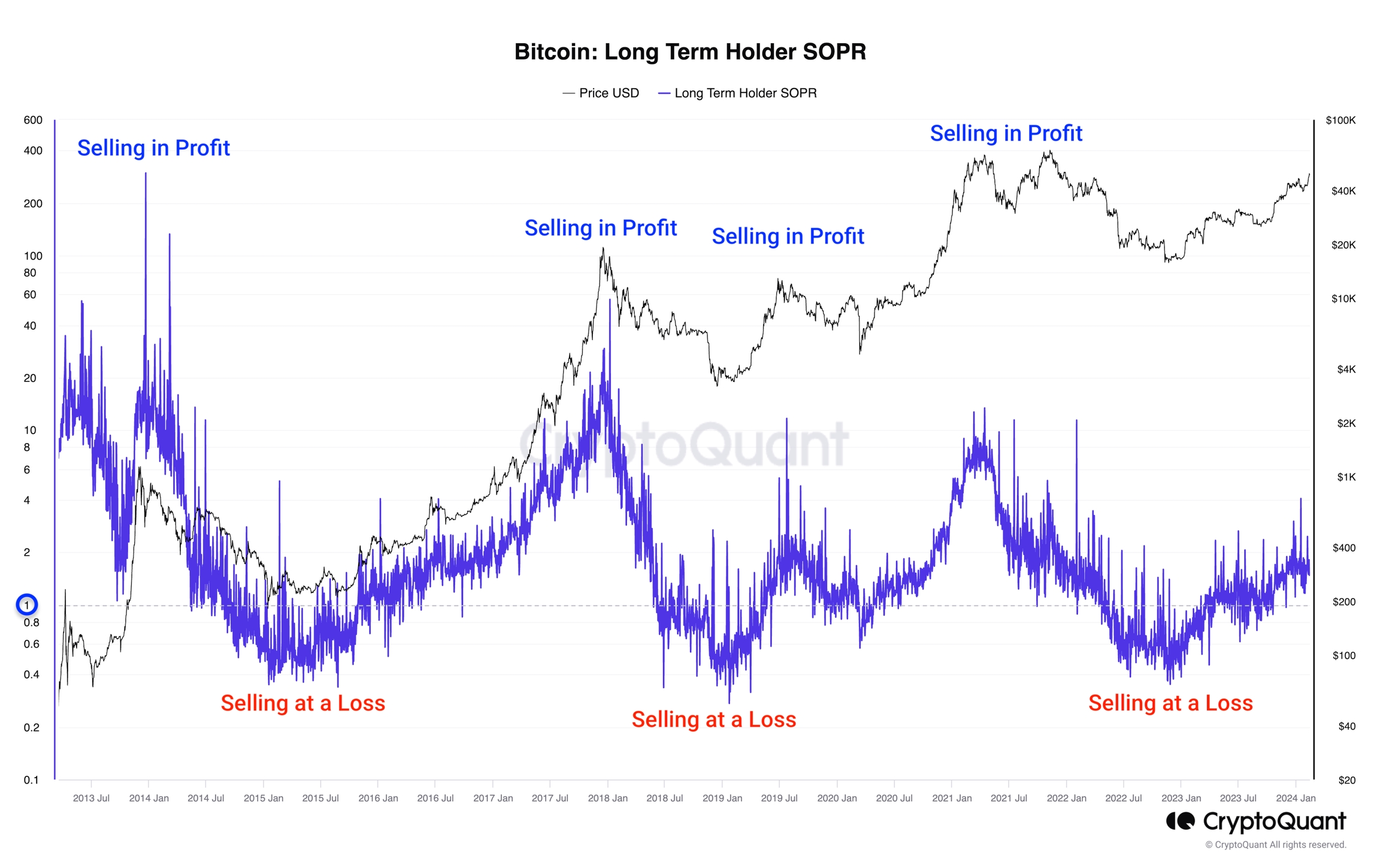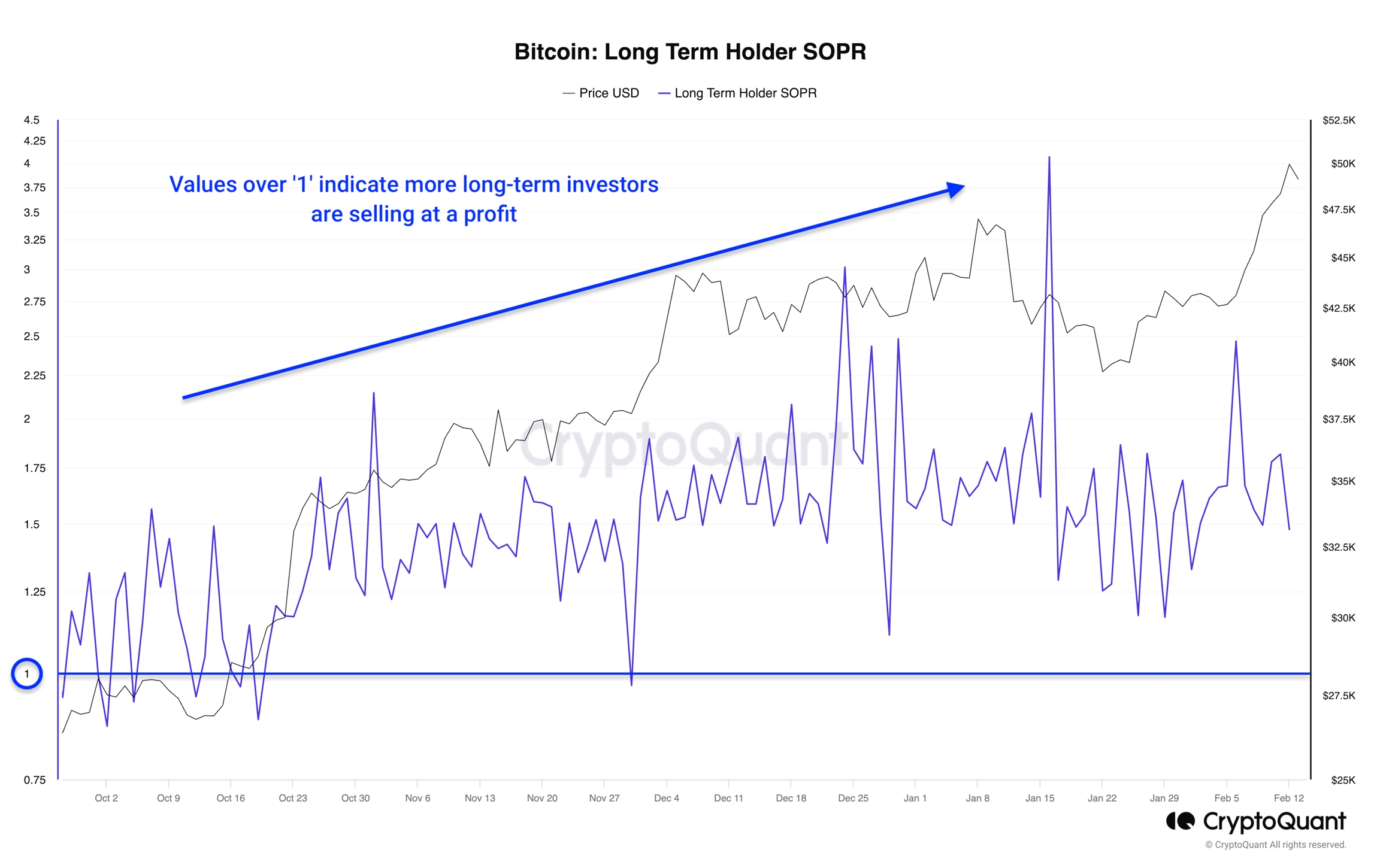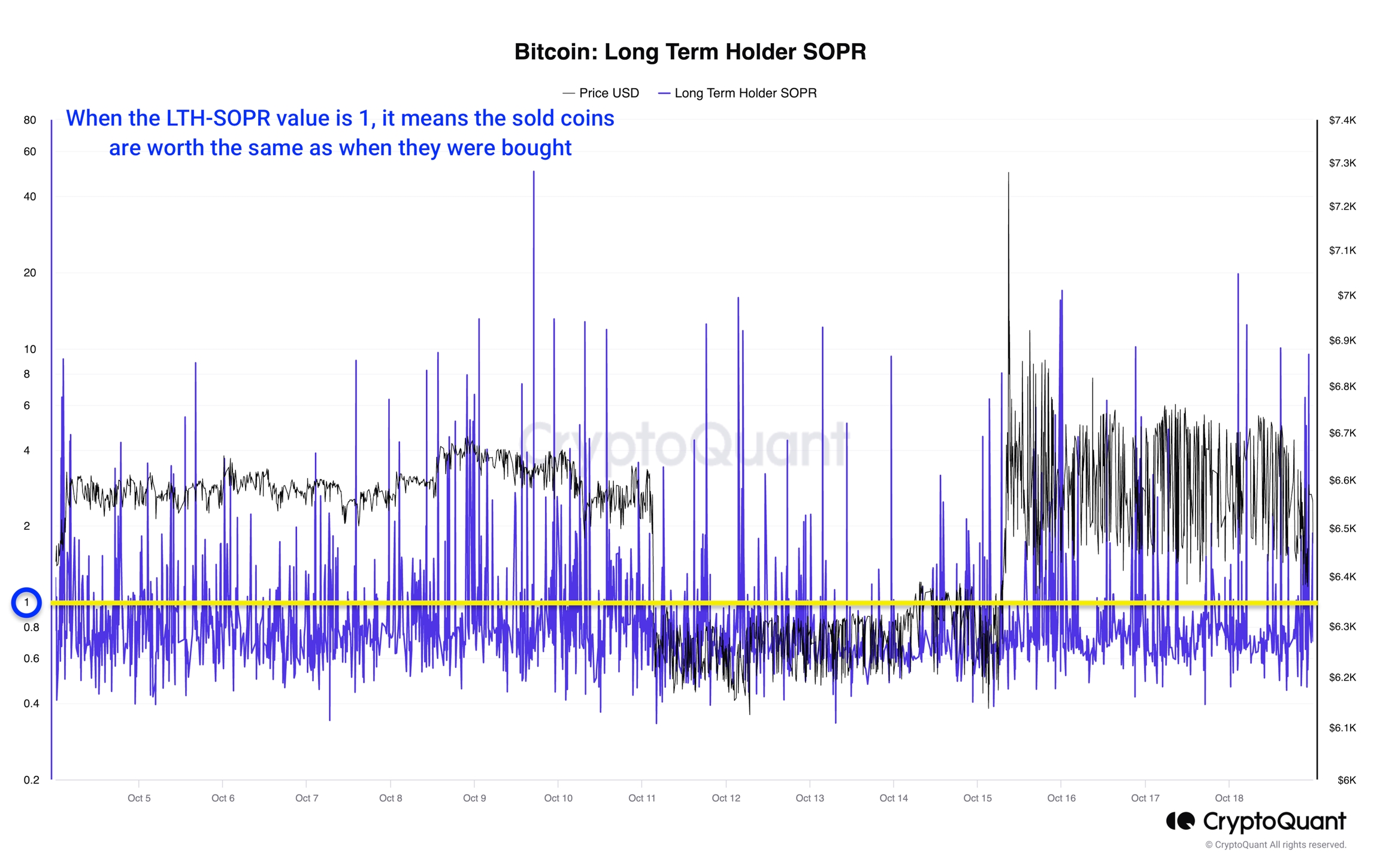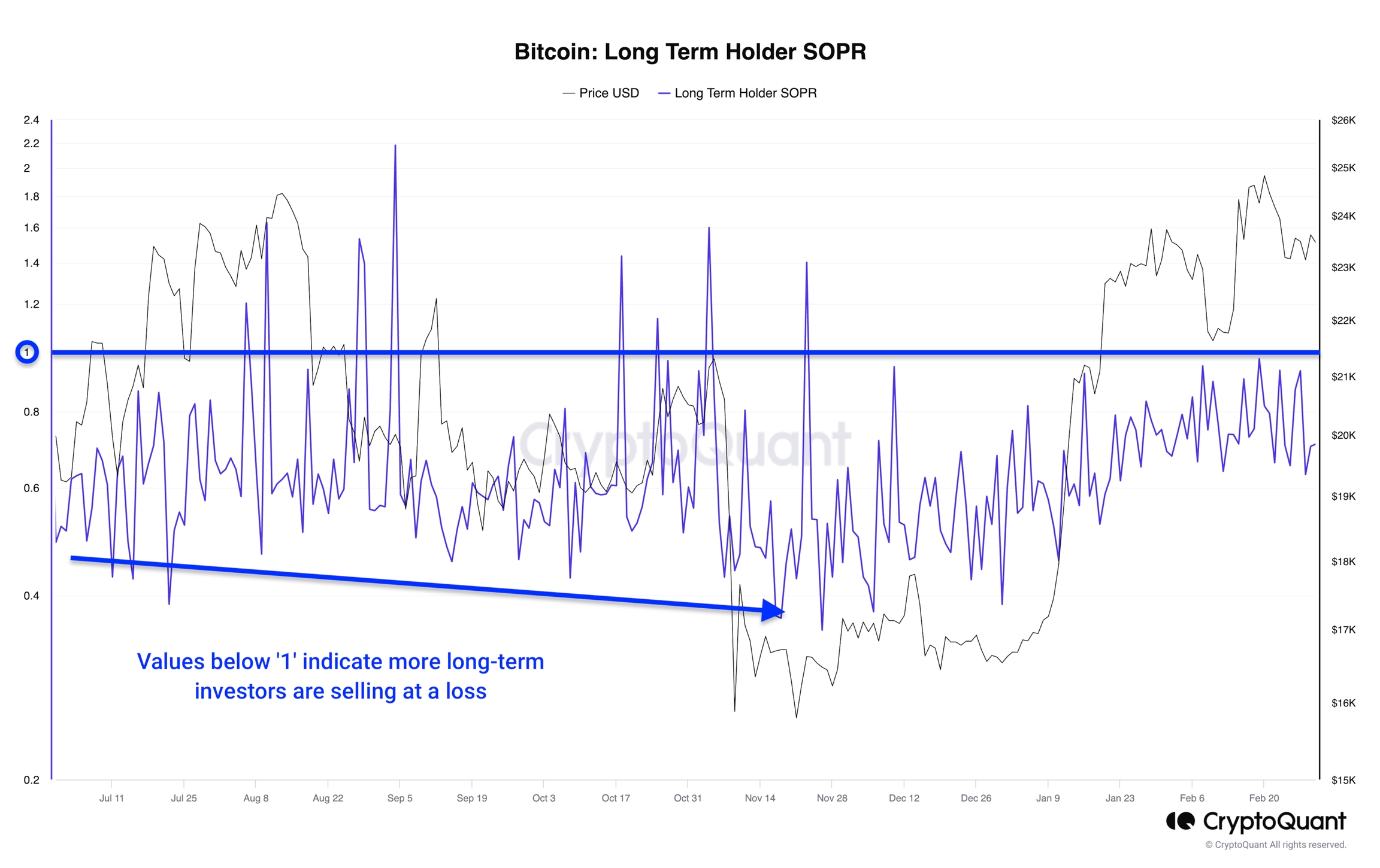LTH-SOPR
Long Term Holder Spent Output Profit Ratio (LTH-SOPR) is a ratio of spent outputs (lived more than 155 days) in profit at the time of the window.
Definition

The Long Term Holder Spent Output Profit Ratio (LTH-SOPR) is a crucial metric used in analyzing market trends and investor behavior, particularly among long-term investors. This ratio provides insights into the behavior of long-term holders by measuring the ratio of spent outputs, which are coins that have been held for more than 155 days, in profit at the time of spending.
By focusing on spent outputs that have lived for an extended period (more than 155 days), the LTH-SOPR value offers valuable information about the profitability of coins held by long-term investors. It is calculated by dividing the USD value of spent outputs at the time of spending (realized value) by the USD value of spent outputs at the time of creation (value at creation). This calculation helps determine whether long-term holders are realizing profits or losses when they sell their coins.
Interpretation
The adjustment was made by not accounting for 155days less lived coins' movements to track long-term investors. This allows excluding-term investors or coins and only focuses on long term held movements.
155 days<UTXOs age.
Analyzing the LTH-SOPR provides insights into market volatility and long-term investor sentiment. A high LTH-SOPR ratio indicates that long-term holders are selling their coins at a profit, suggesting bullish sentiment and confidence in the market. Conversely, a low LTH-SOPR ratio may indicate that long-term holders are selling their coins at a loss, signaling bearish sentiment and potential market weakness.
Investors and analysts use LTH-SOPR filters to identify trends and patterns in long-term investor behavior. By tracking changes in the LTH-SOPR ratio over time, investors can gauge the overall sentiment of the market and make informed decisions about buying or selling coins.
By Value itself
Analyzing the Long Term Holder Spent Output Profit Ratio (LTH-SOPR) by value itself and examining trends provides deeper insights into investor behavior and market dynamics.
LTH-SOPR Value Greater than 1 (LTH-SOPR > 1)

When the LTH-SOPR value is greater than 1, it indicates that the realized value of spent outputs (profits) exceeds the value of those outputs at creation. This suggests that long-term holders are selling their coins at a profit, which could signify a bullish market sentiment and strong confidence among long-term investors. It may also indicate potential selling pressure from long-term holders looking to capitalize on their profits.
LTH-SOPR Value of Exactly 1 (LTH-SOPR = 1)

When the LTH-SOPR value is exactly 1, it means that the realized value of spent outputs equals the value of those outputs at creation. In other words, long-term holders are neither realizing profits nor incurring losses when selling their coins. This could signal a period of stability in the market, with long-term investors holding onto their positions without actively buying or selling.
LTH-SOPR Value Less than 1 (LTH-SOPR < 1)

When the LTH-SOPR value is less than 1, it suggests that the realized value of spent outputs is lower than the value of those outputs at creation. This indicates that long-term holders are selling their coins at a loss, which may reflect a bearish market sentiment and a lack of confidence among long-term investors. It could also imply that long-term holders are taking losses to exit their positions or to rebalance their portfolios.
By examining trend
LTH-SOPR Trending Higher: When the LTH-SOPR is trending higher over time, it suggests an increasing proportion of spent outputs are realizing profits compared to their creation value. This upward trend may indicate growing bullish sentiment among long-term holders, with more investors selling their coins at a profit. It could signal a strengthening market and potential upward price movement.
LTH-SOPR Trending Lower: Conversely, when the LTH-SOPR is trending lower, it implies a decreasing proportion of spent outputs are realizing profits compared to their creation value. This downward trend may suggest mounting selling pressure from long-term holders selling at a loss or a lack of confidence in the market. It could indicate a weakening market and potential downward price movement.
By analyzing the LTH-SOPR both by value itself and by examining trends, investors can gain valuable insights into the sentiment and behavior of long-term holders, helping them make more informed decisions in the cryptocurrency market.
Last updated
Was this helpful?